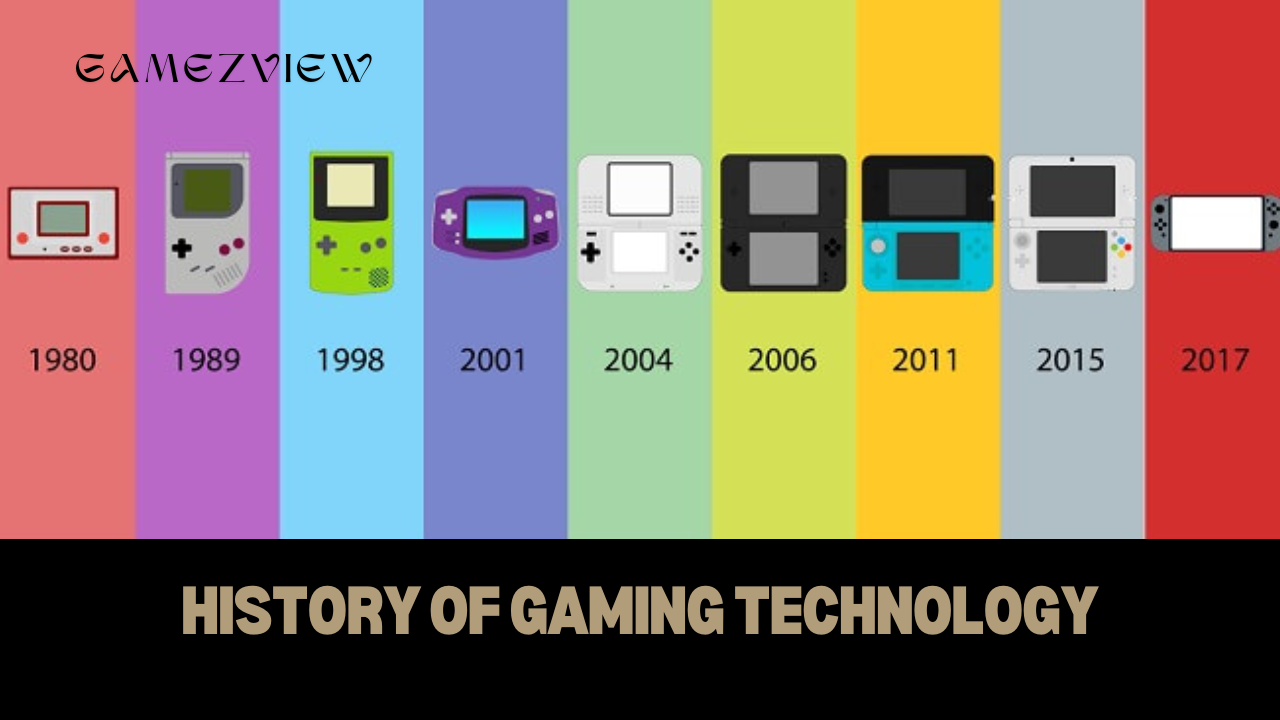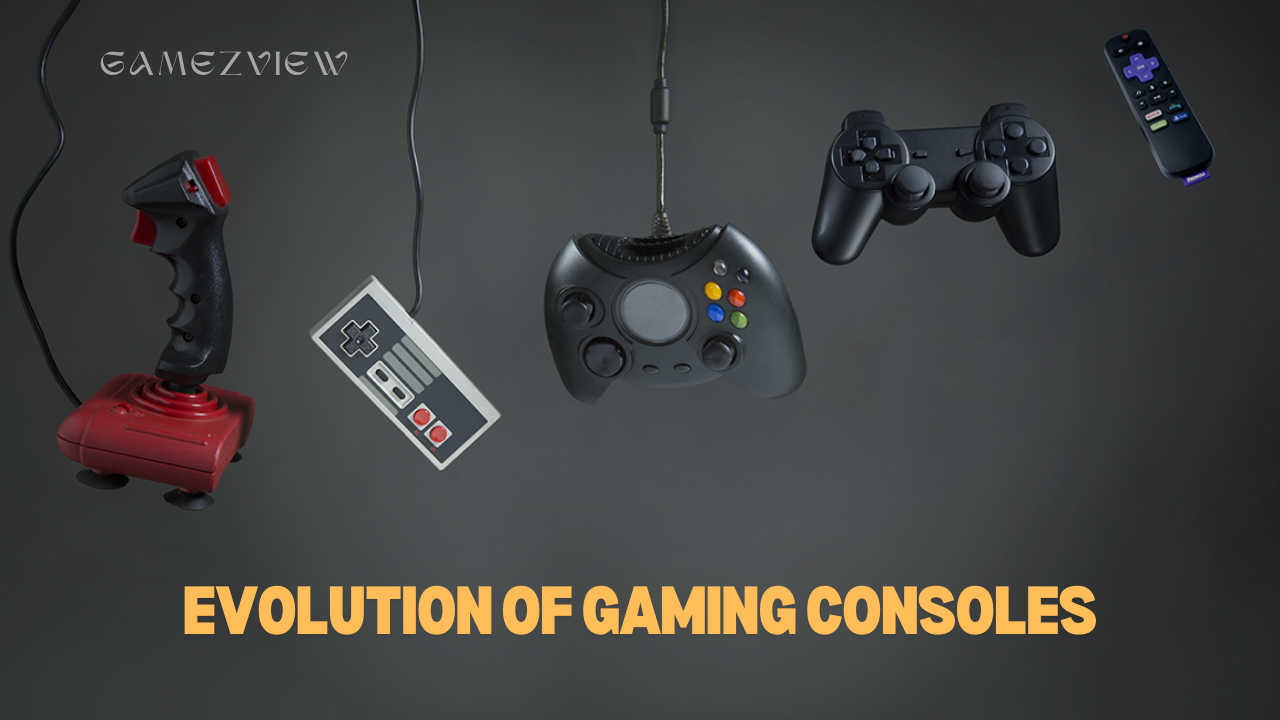Gaming technology, the driving force behind the vast, immersive worlds we explore today, has undergone a transformative journey over the decades. From simple pixelated screens to fully immersive virtual realities, the history of gaming technology reflects a story of innovation, creativity, and cultural significance. Understanding this evolution sheds light on the advancements in technology and the societal impact that gaming has had globally. This article will take you through the various milestones in the history of gaming technology, tracing its roots from the earliest experiments to the current cutting-edge developments.
2. Early Beginnings (1940s–1960s)
The Birth of Computer Games
The concept of gaming dates back to the early 1940s, a period when computers were first being developed. Although these early machines were not designed for gaming, they laid the groundwork for the future. The first known attempt to create a computer game was made by physicist William Higinbotham in 1958. He developed Tennis for Two using an analogue computer and an oscilloscope, a simple tennis simulation that allowed two players to hit a ball back and forth.
The First Gaming Computers: EDSAC and NIMROD
One of the earliest computers designed to play games was the Electronic Delay Storage Automatic Calculator (EDSAC). In 1952, computer scientist Alexander S. Douglas created OXO, a tic-tac-toe game on the EDSAC, marking one of the first instances of a graphical computer game. Meanwhile, NIMROD, a computer built in 1951 by Ferranti, was designed to play the mathematical game of Nim, demonstrating how early computing could be applied to entertainment.
Cathode Ray Tube Amusement Device
Predating these computer games, in 1947, Thomas T. Goldsmith Jr. and Estle Ray Mann patented the Cathode Ray Tube Amusement Device, which used analogue circuitry and a CRT screen to simulate a missile being fired at targets. This device is considered one of the earliest examples of interactive electronic entertainment, setting the stage for the gaming industry.

3. The Golden Age of Arcade Games (1970s–1980s)
The Rise of Arcade Machines
The 1970s marked the beginning of what is often referred to as the “Golden Age of Arcade Games.” This period saw the emergence of dedicated gaming machines in public spaces such as malls, restaurants, and arcades. The first commercially successful arcade game was Pong, created by Atari in 1972. Pong, a simple yet addictive tennis game, became a cultural phenomenon and paved the way for the arcade boom.
Iconic Games: Pong, Space Invaders, Pac-Man
Following Pong, the late 1970s and early 1980s saw the release of several iconic games that defined the arcade experience. Space Invaders (1978) by Taito introduced the concept of high scores and became a global sensation. Pac-Man (1980), developed by Namco, became one of the most recognizable video games of all time and appealed to a broader audience, including women, which was rare in the early days of gaming.
Influence on Popular Culture
Arcade games were not just a form of entertainment; they became a part of popular culture. The popularity of these games led to merchandise, animated series, and even movies based on characters like Pac-Man. The arcade era also saw the first stirrings of competitive gaming, as players would battle for the top spot on leaderboards, a precursor to the esports phenomenon.
4. The Birth of Home Consoles (1972–1983)
Magnavox Odyssey: The First Home Console
In 1972, the Magnavox Odyssey was released as the world’s first home video game console. Created by Ralph H. Baer, often referred to as the “Father of Video Games,” the Odyssey allowed players to enjoy games at home for the first time. The console included a simple system of interchangeable cartridges that could alter the game’s rules, though all games were essentially variations of Pong.
The Atari 2600 and the Explosion of Home Gaming
The real explosion of home gaming came with the release of the Atari 2600 in 1977. With its interchangeable game cartridges, joystick controllers, and a variety of game genres, the Atari 2600 became wildly popular. Games like Space Invaders and Pitfall! became household names, and the console’s success marked the beginning of the home gaming market.
The Video Game Crash of 1983
However, the rapid growth of the gaming industry led to an oversaturation of the market, with too many low-quality games and consoles. This culminated in the Video Game Crash of 1983, a period of sharp decline in the video game industry. Major companies faced bankruptcy, and the future of video games was uncertain. This event, however, set the stage for the next phase of gaming evolution.
How Technology is Revolutionizing the Way We Learn and Teach
5. The 8-bit and 16-bit Eras (1980s–1990s)
The Nintendo Entertainment System (NES) Revolution
In 1985, the gaming industry was revitalized with the launch of the Nintendo Entertainment System (NES). The NES, with its iconic games like Super Mario Bros., The Legend of Zelda, and Metroid, set new standards for home consoles. Nintendo’s strict quality control and innovative gameplay mechanics helped restore consumer confidence in video games and solidified the company’s dominance in the industry.
Sega Genesis vs. Super Nintendo: The Console Wars
The late 1980s and early 1990s witnessed the intense rivalry known as the “Console Wars” between Sega’s Genesis (also known as Mega Drive) and Nintendo’s Super Nintendo Entertainment System (SNES). Sega, with its aggressive marketing and titles like Sonic the Hedgehog, positioned itself as the cooler, edgier brand, while Nintendo continued to push the envelope with games like Super Mario World and The Legend of Zelda: A Link to the Past. This competition spurred rapid advancements in gaming technology, particularly in graphics and sound capabilities.
Evolution of Game Graphics and Sound
The 8-bit and 16-bit eras were defined by significant improvements in graphics and audio, moving from simple, blocky pixels to more detailed and colourful sprites. The introduction of chip-based music and sound effects enhanced the gaming experience, making games more immersive. These technological advancements laid the foundation for the more complex and visually appealing games that would follow in the 3D era.
6. The Rise of 3D Gaming (1990s)
Introduction of 3D Graphics
The transition from 2D to 3D gaming was a monumental shift in the industry. The mid-1990s saw the introduction of 3D graphics, which added depth and realism to video games. This was made possible by advancements in processing power and the development of new gaming hardware capable of rendering three-dimensional environments.
Sony PlayStation and Nintendo 64
The launch of the Sony PlayStation in 1994 and the Nintendo 64 in 1996 marked the dawn of the 3D gaming era. The PlayStation, with its CD-ROM technology, allowed for larger and more complex games, leading to the creation of groundbreaking titles such as Final Fantasy VII and Metal Gear Solid. The Nintendo 64, with its powerful 3D graphics capabilities, introduced gamers to Super Mario 64 and The Legend of Zelda: Ocarina of Time, both of which redefined what video games could achieve in terms of gameplay and storytelling.
Impact of Games like Super Mario 64 and Final Fantasy VII
Super Mario 64 was particularly influential, as it was one of the first games to fully utilize 3D graphics, allowing players to explore a three-dimensional world with unprecedented freedom. Final Fantasy VII brought cinematic storytelling to the forefront, combining 3D graphics with full-motion video, rich narratives, and complex characters, setting a new standard for RPGs (Role-Playing Games).
7. Online Gaming and Multiplayer Evolution (1990s–2000s)
Early Online Gaming Networks
The 1990s also marked the beginning of online gaming. Early online networks like Xband and SegaNet allowed players to connect and compete with others over telephone lines, offering a glimpse into the future of multiplayer gaming. However, these services were limited by the technology of the time, including slow connection speeds and high costs.
The Emergence of MMORPGs
The late 1990s saw the rise of Massively Multiplayer Online Role-Playing Games (MMORPGs), which allowed thousands of players to interact in a virtual world simultaneously. Games like EverQuest (1999) and Ultima Online (1997) became immensely popular, laying the groundwork for future MMORPGs like World of Warcraft (2004), which would dominate the genre for years.
Console Online Gaming: Xbox Live and PlayStation Network
With the advent of broadband internet in the early 2000s, console gaming embraced online play. Microsoft’s Xbox Live, launched in 2002, was a game-changer, providing a unified online service where players could compete, communicate, and download content. Sony followed with the PlayStation Network in 2006, further cementing online gaming as a central aspect of the gaming experience.
8. The Advent of Mobile Gaming (2000s)
The Role of Nokia Snake and Java Games
Mobile gaming began in earnest with simple games like Snake, which was pre-installed on Nokia phones in the late 1990s. These early mobile games were limited by the hardware but demonstrated the potential for gaming on the go. As mobile phones evolved, so did the complexity of the games, with Java-based games becoming increasingly popular in the early 2000s.
Rise of Smartphone Gaming
The introduction of the iPhone in 2007 revolutionized mobile gaming. With the App Store, developers could easily distribute games to millions of users. This led to a boom in smartphone gaming, with titles like Angry Birds and Candy Crush Saga becoming global sensations. The convenience and accessibility of smartphone gaming brought in a new demographic of players, many of whom had never considered themselves gamers before.
The success of Games like Angry Birds and Pokémon GO
Angry Birds (2009) became one of the first mobile games to achieve mainstream success, combining simple gameplay with addictive mechanics. Later, Pokémon GO (2016) introduced augmented reality (AR) gaming to the masses, encouraging players to explore the real world in search of virtual creatures, blending the digital and physical realms in a novel way.
9. Motion Control and Virtual Reality (2000s–2010s)
Introduction of Motion Control: Nintendo Wii
In 2006, Nintendo once again changed the landscape of gaming with the introduction of the Wii, a console that used motion-sensing controllers. The Wii’s innovative design allowed players to physically interact with games in a new way, making gaming more accessible and appealing to a broader audience, including families and non-traditional gamers.
The Evolution of VR: Oculus Rift, PlayStation VR
Virtual Reality (VR) has long been a dream for the gaming industry, but it wasn’t until the 2010s that it became viable for consumers. The Oculus Rift, released in 2016, was one of the first consumer-grade VR headsets to deliver an immersive experience. Sony’s PlayStation VR followed shortly after, making VR gaming more accessible to console players. These advancements in VR technology have opened up new possibilities for game design and player immersion.
Impact on Gaming Experience and Accessibility
Motion control and VR have significantly impacted the way games are played and experienced. These technologies have not only enhanced the immersion of games but also made them more physically engaging and accessible to people with different abilities. The introduction of VR has also led to the development of new genres and experiences that were previously unimaginable.
10. The Growth of Esports (2000s–Present)
Early Competitive Gaming Tournaments
Competitive gaming has been around since the early days of video games, but it wasn’t until the late 1990s and early 2000s that esports began to take shape as a formalized industry. Early tournaments for games like StarCraft and Counter-Strike attracted dedicated communities, laying the foundation for the esports industry.
The Rise of Esports Organizations and Sponsorships
As esports grew in popularity, professional organizations and leagues began to form. Games like League of Legends and Dota 2 became the centrepiece of massive tournaments, drawing in millions of viewers worldwide. Sponsorships from major companies further legitimized esports, transforming it into a multi-billion-dollar industry with professional players, coaches, and teams.
The Role of Streaming Platforms in Esports Growth
The rise of streaming platforms like Twitch and YouTube has been instrumental in the growth of esports. These platforms allow fans to watch live games, interact with players, and follow their favourite teams. The accessibility of streaming has helped esports reach a global audience, making it one of the fastest-growing segments of the entertainment industry.
11. The Impact of Streaming and Cloud Gaming (2010s–Present)
The Influence of Twitch and YouTube on Gaming Culture
Streaming has not only influenced esports but has also become a significant part of gaming culture. Platforms like Twitch have turned gaming into a spectator sport, where millions of viewers tune in to watch their favourite streamers play games, provide commentary, and engage with their audience. This has led to the rise of gaming personalities and influencers, who have become key figures in the gaming community.
Introduction to Cloud Gaming: Google Stadia, NVIDIA GeForce Now
Cloud gaming, where games are streamed over the internet rather than played on local hardware, represents a potential shift in how games are accessed and played. Services like Google Stadia and NVIDIA GeForce Now allow players to play high-end games on a variety of devices without needing powerful hardware. While still in its early stages, cloud gaming promises to make gaming more accessible and could change the way games are distributed and consumed.
The Future of Gaming Distribution and Access
As internet infrastructure improves, cloud gaming could become the dominant method of game distribution. This shift could lower the barrier to entry for gaming, making it possible for anyone with an internet connection to play the latest games. However, it also raises questions about ownership, data privacy, and the future of physical gaming media.
12. The Modern Console Wars (2010s–Present)
Xbox vs. PlayStation vs. Nintendo
The modern era of gaming has seen the continuation of the console wars, primarily between Microsoft’s Xbox, Sony’s PlayStation, and Nintendo’s Switch. Each company has taken a different approach, with Xbox focusing on services like Game Pass, PlayStation on exclusive high-quality titles, and Nintendo on innovative gameplay experiences.
The Role of Exclusive Titles and Services
Exclusive games have always played a crucial role in the success of a console. Titles like The Last of Us for PlayStation, Halo for Xbox, and The Legend of Zelda: Breath of the Wild for Nintendo have not only driven console sales but also defined the identity of each brand. Additionally, services like Xbox Game Pass, which offers a subscription model for accessing a large library of games, are changing how players interact with games and consoles.
Innovations in Hardware and Software
The competition among these giants has driven rapid advancements in both hardware and software. The latest consoles boast powerful processors, high-resolution graphics, and fast load times, while software innovations like ray tracing and AI-enhanced gameplay are pushing the boundaries of what’s possible in gaming.
The Future of Biotechnology: Innovations and Ethical Considerations
13. Indie Games and the Democratization of Game Development
The Rise of Independent Game Developers
The rise of digital distribution platforms like Steam and the Epic Games Store has enabled independent developers to reach a global audience without the need for a traditional publisher. This democratization of game development has led to an explosion of creativity, with indie games often exploring niche genres and innovative gameplay mechanics.
Distribution Platforms: Steam, Itch.io, Epic Games Store
These platforms have become crucial for indie developers, offering them the tools to distribute their games directly to consumers. Steam, in particular, has been instrumental in the success of many indie titles, while Itch.io has provided a platform for smaller, experimental games. The competition between these platforms has also resulted in better revenue shares and support for developers.
Notable Indie Games and Their Impact
Indie games like Minecraft, Undertale, and Celeste have had a significant impact on the industry, often rivalling or surpassing the success of major AAA titles. These games have shown that innovative gameplay and compelling stories can come from small teams, challenging the traditional industry model and encouraging more diversity in game design.
14. Gaming Technology in the Future
The Potential of Artificial Intelligence in Games
Artificial Intelligence (AI) is poised to revolutionize gaming in the coming years. AI-driven characters and environments can create more dynamic and responsive worlds, offering players a more personalized experience. AI could also enhance game design by automating complex tasks, allowing developers to focus on creativity and innovation.
Augmented Reality and Mixed Reality in Gaming
While Virtual Reality has already made a significant impact, Augmented Reality (AR) and Mixed Reality (MR) are the next frontiers. AR games like Pokémon GO have shown the potential of blending the digital and physical worlds, and future advancements could lead to even more immersive and interactive experiences. Mixed Reality, which combines elements of both VR and AR, could offer new ways to play games, interact with virtual objects, and even collaborate with others in shared virtual spaces.
Speculations on the Future of Gaming Hardware and Software
The future of gaming hardware could see the integration of more advanced technologies such as quantum computing, which could dramatically increase processing power and enable entirely new types of games. On the software side, we might see the rise of procedurally generated worlds that evolve based on player actions, creating unique experiences for every player. The convergence of gaming with other forms of media, such as movies and music, could also lead to new, hybrid entertainment experiences.

The history of gaming technology is a testament to human ingenuity and the relentless pursuit of innovation. From its humble beginnings in the labs of early computer scientists to the multi-billion-dollar industry it is today, gaming has continually pushed the boundaries of technology and creativity. The cultural and economic impact of gaming is undeniable, influencing everything from art and music to social interactions and education. As technology continues to evolve, so too will gaming, promising new experiences and opportunities for future generations.



